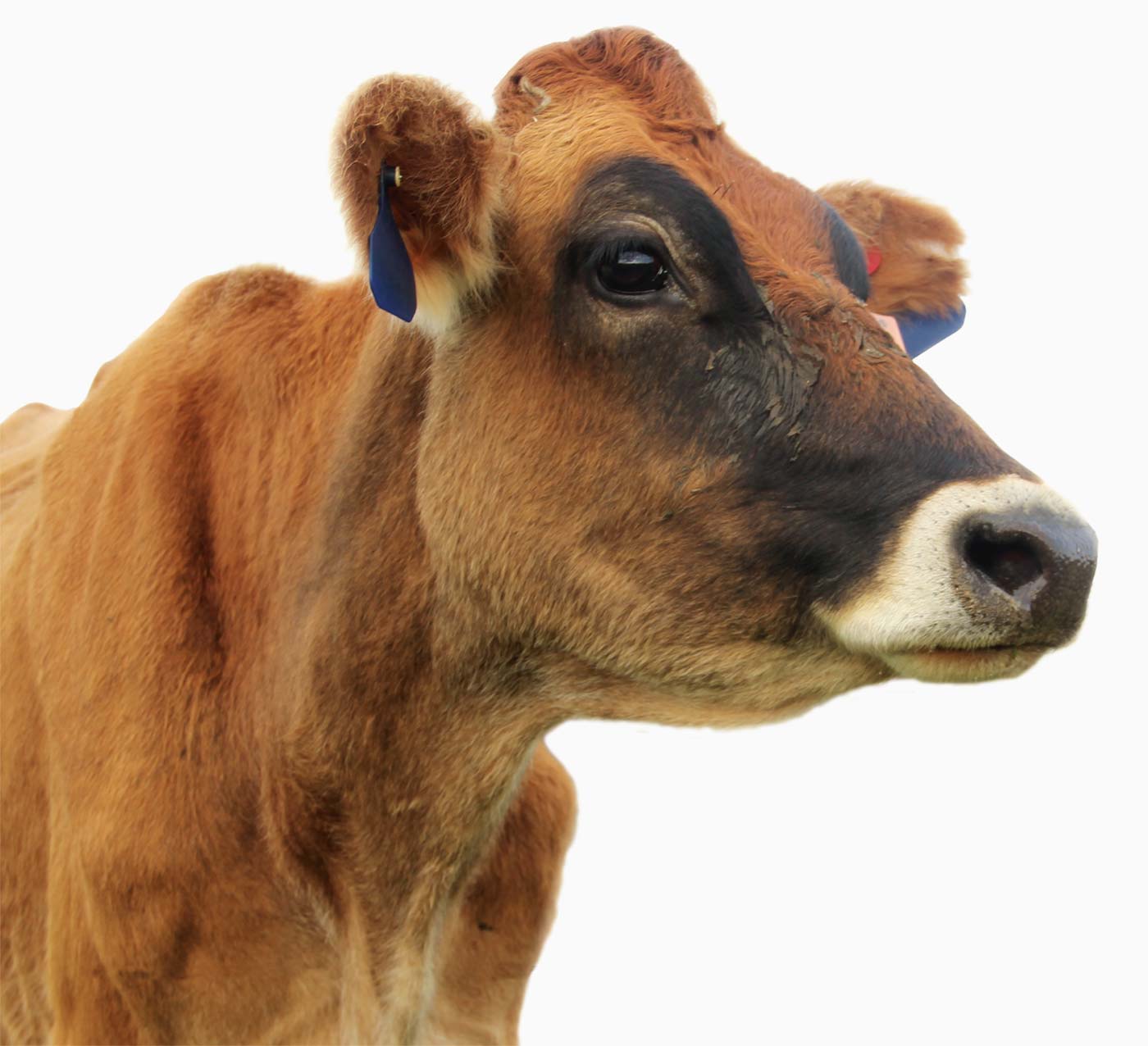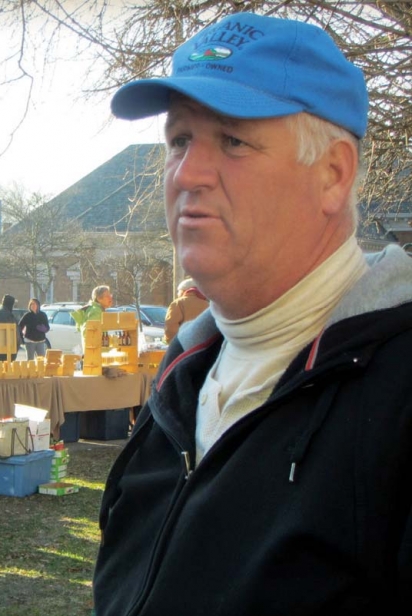Who's Being Milked?
Ann Chaney Kalmey had no inkling she would cause such a stir. A seasoned writer of private “venting” letters, the Shelby County woman and her husband, John, operate a 125-cow dairy farm on 480 beautiful acres not far from Louisville. She decided to take public an open letter to anyone who would read it on a subject near and dear to her heart: the low prices paid to dairy farmers for their milk.
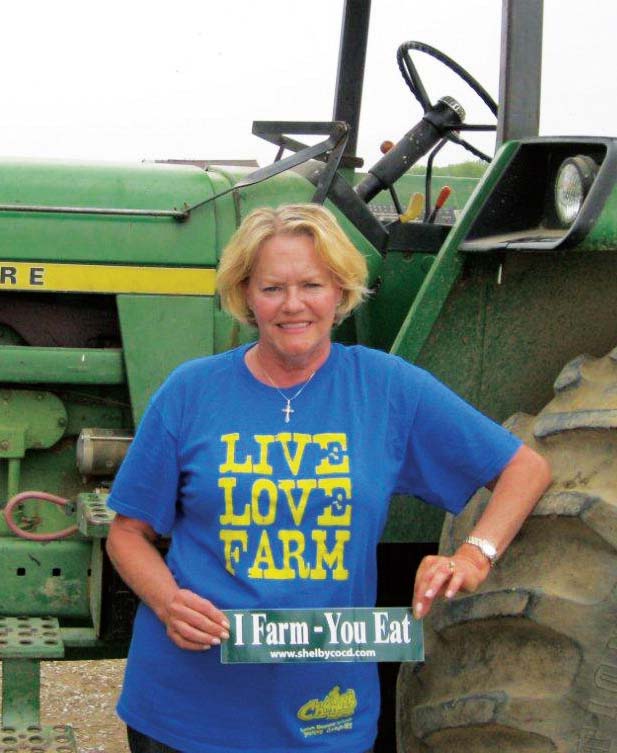
Excerpt from letter by Ann Chaney Kalmey; Photo courtesy Ann Kalmey
… There has to be someone, somewhere who can help! I hope and pray you can because if not, eventually there will be more farm families going under and losing all those years of sweat equity they have for pennies on the dollar. I am writing this letter hopefully to help those who aren’t as fortunate as us. How many more dairy farm families will go under before someone takes notice and action? How many more dairy farmers will we lose to suicide because the thought of losing their farms, many family farms is just too depressing?
—Ann Chaney Kalmey
“We are working so hard to try and make a go of it,” she wrote. “Fourteen- and 15-hour days just to stay in business.”
It makes perfect sense that someone with the names “Chaney” and “Kalmey” would get some attention from an open letter about milk pricing. Her marriage joins two long-distinguished Kentucky dairy families. The Shelby County Kalmeys are leading breeders of registered Holstein cattle, the large black-and-white high-volume milk machines preferred by the dairy industrial complex. John Kalmey’s grandfather started the family dairy in the 1920s. The Chaneys in Warren County now produce their own brand of ice cream and milk from a Jersey cow herd they have maintained since 1940, when Ann Kalmey’s father bought their first cow. Jerseys typically produce less milk by volume than the Holsteins, but provide richer, creamier milk.
The Kalmeys and the Chaneys are part of a Kentucky agricultural sector that has seen 90% of its farms close since 1982, when the state had more than 10,000 dairies and 253,000 dairy cows. Today, Kentucky has around 840 dairy farms, and fewer than 73,000 dairy cows. Local milk is extremely difficult to find.
When she wrote her letter earlier this year, Ann Kalmey had grown weary of watching her husband work dawn to dark to produce high-quality milk at roughly the same price he has received for the last 20 years, while the costs of feed, fuel and most other foods have steadily increased. She was deeply moved by a neighbor’s suicide, which his family attributed to the growing pressures of keeping the family farm when milk prices fell below the cost of production.
Wearing a John Deere–green hooded sweatshirt emblazoned with the words “Live, Love, Farm,” Kalmey described how she was sitting on a tractor mowing one gorgeous Saturday afternoon, after buying a gallon of milk for $2.29 at a grocery store that morning. She had started the letter some time earlier, but decided then to finish it. “I found the letter and finished it to send to our representatives in Congress,” she said.
She consulted with her friend Maury Cox, executive director of the Kentucky Dairy Development Council, who helped her with some edits. Cox posted the letter on his group’s Facebook page, and talked with Kalmey the next day. “I remember he laughed and said ‘Are you sitting down? Over 1,500 people have read the letter in less than 24 hours,’” she said.
Eventually, the letter was published in at least a dozen newspapers, farm publications and social media sites. Kalmey received numerous e-mails and phone calls from throughout the United States, Canada and England, including a call from Michael Scuse, the undersecretary for Farm and Foreign Agriculture Services at the U.S. Department of Agriculture (USDA) in Washington, DC.
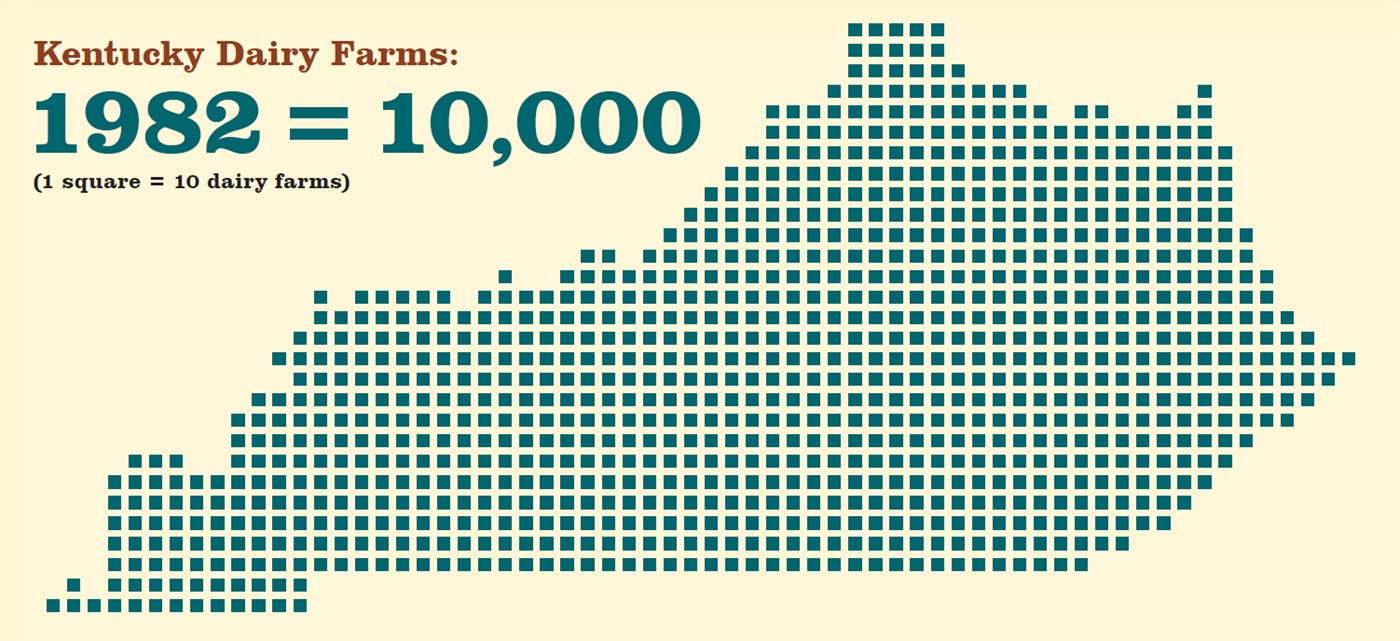
U.S. DAIRY POLICY
By her own admission, Kalmey didn’t know much about national dairy policy before writing her letter. “I regret at the time I didn’t understand all the problems that were involved,” she said. “The milk inspector scared me to death when he said I might have to do interviews, so I have been reading everything I can get my hands on and picking people’s brains. One thing for sure: After reading the milk order several times I still don’t understand it.”
That’s the Milk Marketing Order, the federal government’s system of setting the price for the raw milk sold by farmers to processors. On its most basic level, the system encourages volume over quality, but even long-time dairy farmers do not fully understand it.
The system divides the country into 10 areas, excluding California and four other states that have their own marketing orders. The federal Agricultural Marketing Service sets the price for about 70% of the nation’s fluid milk, depending on the milk’s projected use. Highest prices are for milk intended for drinking (Class I), while lowest prices are for milk used in manufactured dairy products like yogurt, cheese, butter and nonfat dry milk. Market orders encourage milk purchases for these products, denying most farmers the highest prices and delivering the lowest cost milk to processors.
Kentucky is divided primarily between two different market order areas, with most of the state (80 counties) falling into the Appalachian Marketing Area; the Southeast Marketing Area includes 22 Kentucky counties. Appalachia and the Southeast are called “milk deficit” areas, meaning supplies don’t meet demand. Government policies are largely responsible for creating these “deficit” areas, because the low prices set by market orders don’t allow farmers like the Kalmeys to raise their prices, even when their cost of feed and fuel are rising.
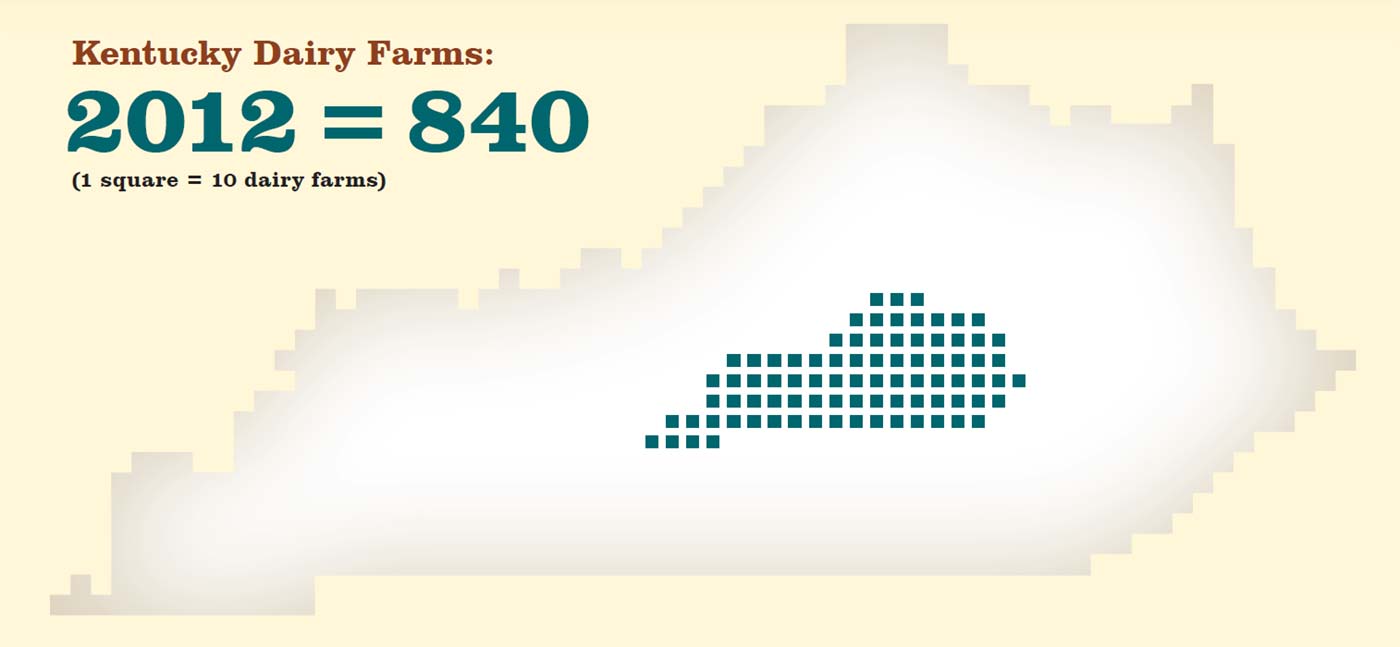
Marketing Order policies are voted on by farmers, but in Appalachia and the Southeast “farmers” are represented by the conglomerate Dairy Farmers of America (DFA), a national cooperative created by the merger of several regional cooperatives in 1996. “Some in KDDC are concerned because cooperatives have consolidated and are controlled by national boards; you lose the local representation,” said Maury Cox. “You lose the effects of policy that would benefit local farmers.” Cox leads the Kentucky Dairy Development Council (KDDC), a group established to advocate for Kentucky dairy farm families.
Dudley Tapp runs On Tapp Dairy in Washington County with his wife, Shirley, and son, Joseph. He has been a dairy farmer for 32 years, milking around 75 cows on 239 acres. He sells his milk to DFA. “The cheapest milk I ever sold was in 2008, not in 1980 when I started,” Tapp said.
DFA—once a cooperative representing the dairy farmer—has also evolved into a processor, and now seeks the cheapest raw milk it can buy. Lower-cost milk comes from areas where mega-dairies are concentrated, placing DFA in direct conflict with the small farmers in Kentucky that it theoretically represents. The entity that votes on their prices is also one of only two major markets for Kentucky farmers’ milk. “DFA is like the mafia,” said Bob Hawes, who closed his Owen County Grade-A dairy in January after milking 32 years. “DFA is a corporate processor posing as a grower co-op.”
Price manipulations and other processor practices are accelerating the demise of small dairies in Kentucky. Processors tell farmers that prices will increase, and farmers respond by increasing their herd size and overhead costs to maximize production and profits. A month or two later, prices can fall, leaving the small farmers with larger herds and higher costs, but without the prices to pay the bills.
For Will Browning, a Pendleton County farmer, it was allegations that his milk quality declined. “In three months time, my price went from $21 to $9.96,” Browning said, though he proved the alleged quality issues were nonexistent. He since closed his dairy. Dairy farmers in Appalachia and Southeast filed a class-action lawsuit against processors, alleging violation of federal antitrust laws through collusion for lower prices. Some defendants deny they did anything wrong, but Dean Foods, the nation’s largest processor, recently agreed to a $140 million settlement. DFA has thus far refused to settle. A trial is scheduled for January 15. John Kalmey is not a DFA member, opting instead to sell his milk directly to Dean, which sells about 40% of the nation’s milk and is the primary driver toward highly concentrated production and processing sectors. “What’s really killed the producer in Kentucky is consolidation of milk markets. There used to be five, six or seven places a Shelby County farmer could sell their milk. Then it got down to Dean’s and DFA.”
“There used to be plants in Springfield, Taylorsville and Harrodsburg that took local milk and gave dairy producers a choice of a market,” Tapp concurred. “They all got bought out by bigger companies and shut down.”
According to the New York Times, Dean Foods Chairman/CEO Gregg Engles received approximately $156 million in compensation over the past 10 years. Engles is widely credited as the leader of dairy consolidation.
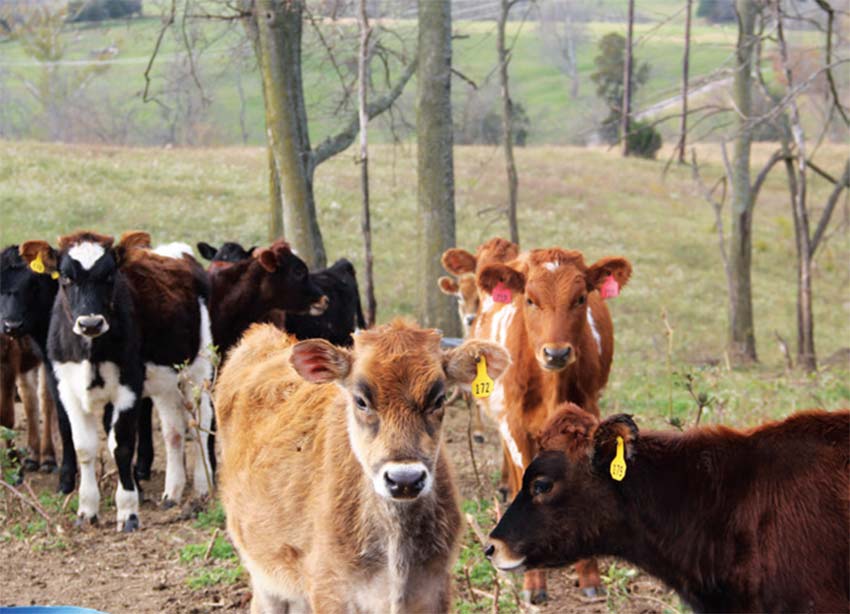
GOT KENTUCKY MILK?
The results of federal dairy policy and the system it sustains have been disastrous not only for Kentucky dairy farms but dairies throughout the nation. A 2010 report by the National Agricultural Statistics Service details far-reaching changes within the recent past. In 2001, there were 97,460 dairy farms nationwide. Eight years later there were 65,000, a 33% decline. Farms of 500 cows or less fell in number by 35%, while farms with 2,000 or more cows increased 128%. The intensive production methods employed by the mega-dairies increased their market share by 18%, while small farms’ decreased by 21%. Pumping cows full of corn and corn silage and pushing them to produce as much milk as possible maximizes milk volume, but minimizes a cow’s life.
These national trends are sadly evident in Kentucky. In 30 years, our state of rolling hills and more prime grassland than most places in the world has lost 90% of our dairy farms. Tapp remembered something the Washington County Extension Agent used to say in dairy meetings.
“He would say that Washington County had 88 dairies in 1988,” Tapp recalled. “And in 2008, we had eight. There used to be dairy farms everywhere. Now you have one farm milking 35,000 cows in Indiana bringing milk into Kentucky.”
As critical mass of producers has been lost, other farmers have been forced out even if they could make the pricing work. Hawes operated a small dairy in southeastern Owen County for 32 years until January. “In the second week of January I was informed that our milk hauler was retiring,” said Hawes, a retired high school biology teacher. The new hauler decided Hawes was too far off his route to making picking up Hawes’s milk worthwhile. The intensive production practices championed by processors, feed companies and universities have also contributed to the closure of Kentucky dairy farms. Tapp noted that the corn-based feeding systems promoted by the dairy industrial complex are as bad for dairy cows as they are expensive for farmers.
Cows are designed to graze. From their mouth and teeth to a series of stomachs that digest fibrous grasses, they can uniquely transform Kentucky grasslands to milk and meat. Feeding cows corn can increase milk production, but it’s very expensive for farmers and causes a variety of health problems for the animal. “Universities have taught dairy farmers to treat a milk cow like a hog: pump it up on corn and corn silage,” Tapp said. “God did not intend for cows to eat corn.”
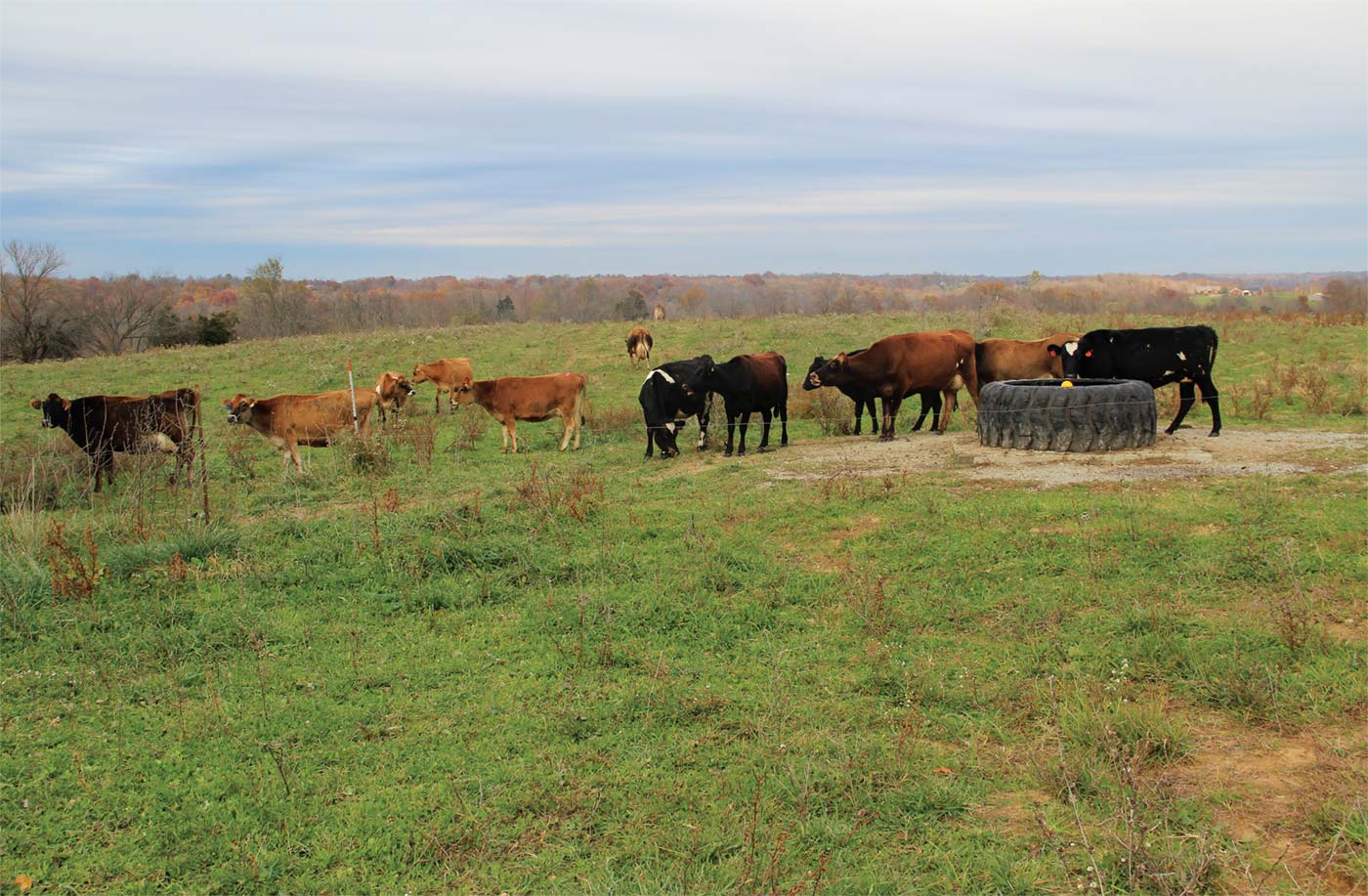
THE WAY THINGS SHOULD BE
When asked what his ideal situation would be, John Kalmey had a simple answer. “Local production, local processing and local consumption,” he said. “No one knows how effective that could be.”
According to a 2002 University of Wisconsin study, dairy cows have great potential as economic development engines and could help revitalize rural Kentucky. Each cow generates more than $13,000 in annual economic activity, rippling through communities in the form of jobs, goods, services and tax revenue. A 100-cow dairy producing 2.2 million pounds of milk per year would generate $1.3 million in total economic activity, including $78,000 in federal taxes and about $51,000 in state and local taxes. “A lot of Kentucky is an ideal place to put cows,” Tapp said. “You would think the elected officials in Kentucky would notice how much revenue has been lost from closed dairy farms.”
If small dairies are going to survive, several things have to change. Moving from corn-based feeding systems to grass-based feeding systems makes sense in a state like Kentucky, where every hillside is covered in our most abundant renewable natural resource. Corn-based feeding consists of 30 or more pounds of corn per cow per day, with grazing used as a supplement. Grassbased systems rely primarily on grass, with most producers supplementing with one to 10 pounds of corn per day.
Tapp says the world’s leading dairy producer, New Zealand, makes cow health and profitability per cow top priorities, while the U.S. system emphasizes maximum production, pushing cows hard with grain-based diets, leading to shorter lives for the cows. Grass-based dairying is perfect for Kentucky, a market niche that would thrive from advantages in milk quality, insulation from grain feed prices, and longer productivity from healthier animals.
“We have to have cows on pasture,” said Hawes, the retired biology teacher and dairy farmer. “Evolution enabled her to develop a rumen, which enables her to efficiently digest grass, not grain.”
A system of local production, local processing and local consumption would be simpler and involve much less government. Browning noted an irony between the large corporately dominated milk system and the big government programs that enable it. Government will have to change its perspective.
“We don’t have a standard for smallscale production,” Hawes said. “Everything is slanted for big operations.”
Consumer education is important, he added, and consumers should have more options.
“I would like the consumer to realize that the prices paid to farmers are so close to the cost of production that producers are driven to get bigger and bigger,” Hawes said. “Quality suffers. What Ann Kalmey said in her letter hits the nail on the head.” Tapp is going to continue to make a go of it, but it’s not easy. He and his family are supplementing their milk income by selling veal, chicken, eggs, grass-fed beef and pork at the Douglass Loop farmers’ market. He recently entered into an agreement with Organic Valley, which sets its prices on an annual basis rather than the monthly changes of the dairy industry.
“We’re just looking for ways to stay in what we know,” Tapp said.


